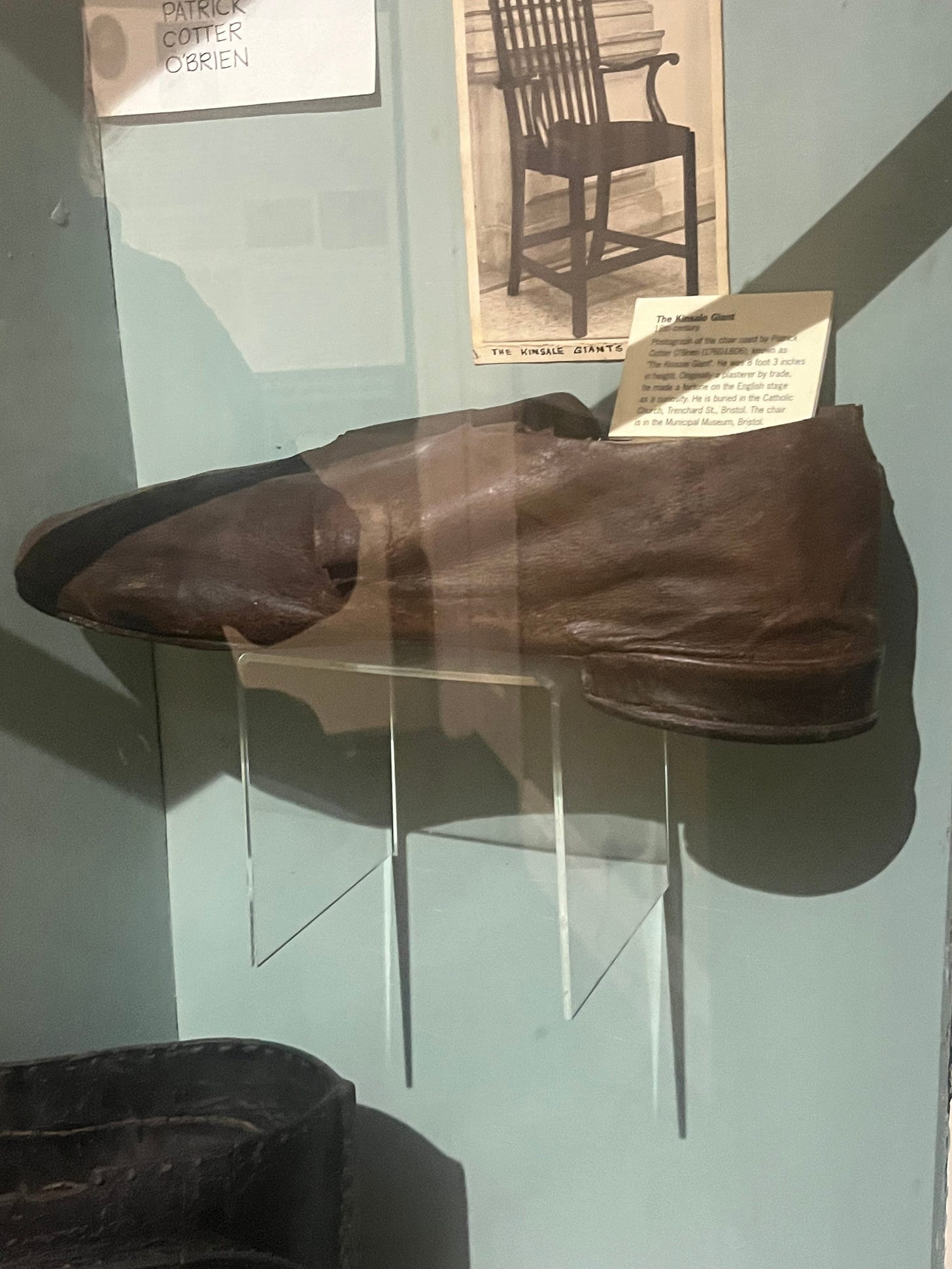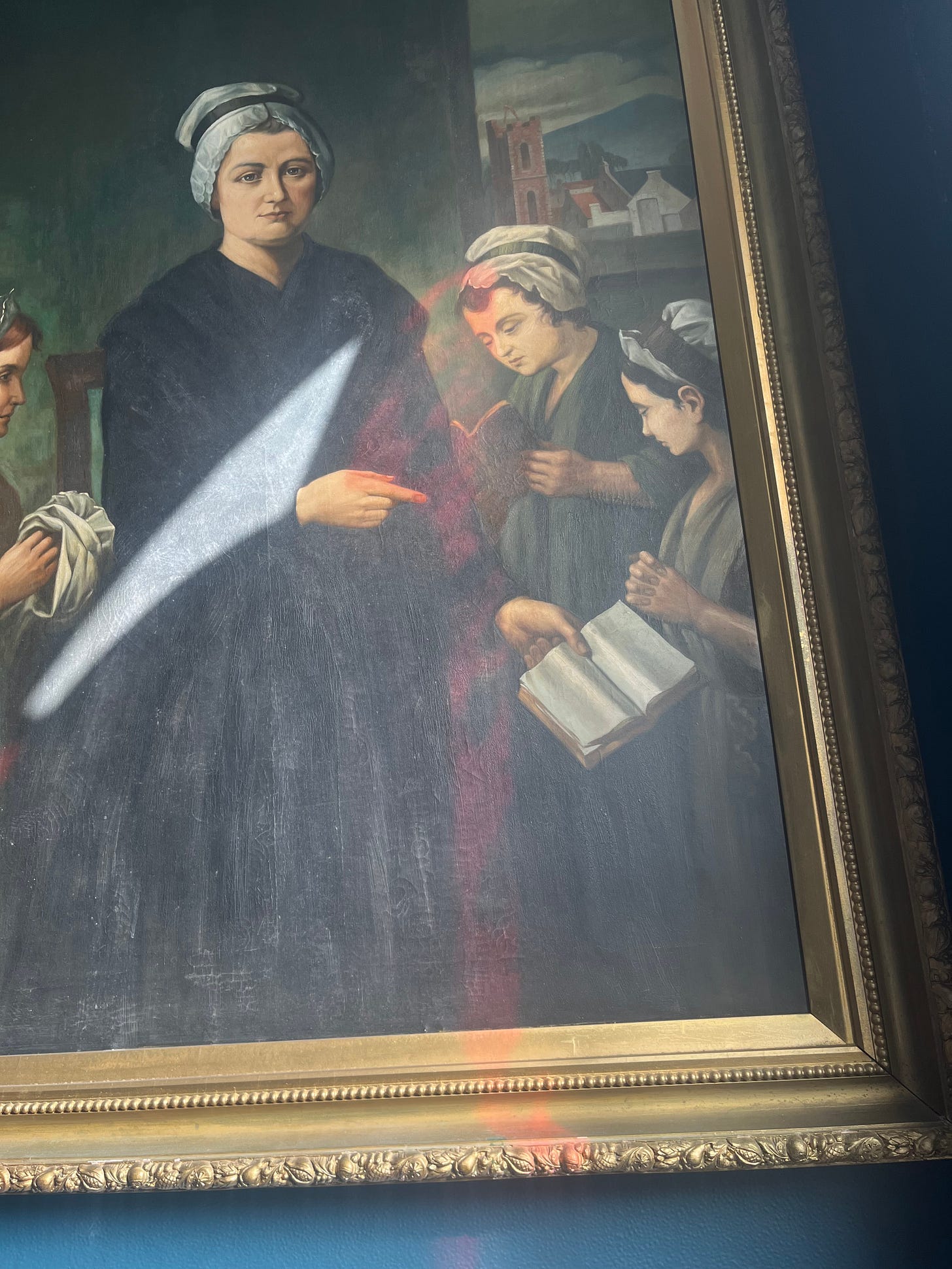I finished John Banville’s novella The Newton Letter which is weirdly out of print for such a perfect thing. I had to hunt it down after an old man in a pub told me he rereads it annually. The narrator, a male academic rents a cottage on the Irish estate of an intriguing and odd family- a married couple, the woman’s 20 something niece and a child. His plan is to finish a book on Newton(the format of the book imitates Newton’s despairing letters one of which we find out at the end of the book, is fake) but instead, obsesses over the dynamics of the family- whose child is it? Are they Protestant? Has something grotesquely impermissible taken place? As he begins a sexual affair with one of them, he uses the lofty tone meant for his work for what is at the end of the day, a commonplace affair with a predictable outcome . It felt like a relevant book to now , in light of Jordan Peterson being in the news with his new book. When Peterson compares cleaning ones room to slaying a dragon its about making the banal noble and romantic as a kind of survival tactic which easily becomes ridiculous (ie bathos). The Newton Letter appears to mock this (in my reading of it) though the humour is incredibly crisp- A woman whose body is cheesily compared to Venice is later best remembered by him for pissing in a chamberpot which she calls a ‘jolly-pot’ as the lavatory isn’t working- it is the ‘jolly-pot’ scene which is better written and more evocative. It is filled with beautiful sentences cosplaying as incidental. A clock “feathered the silence and let drop a single wobbly chime” an alcoholic’s “breath hit me, a warm brown cloud” which are the true success of making the banal noble, these minute observations, compared to the narrator’s more pompous reflections such as ‘I thought of Canon Koppernigk at Frauenberg, of Nietzsche in the Engadine, of Newton himself, all those high cold heroes who renounced the world and human happiness to pursue the big game of intellect’ which is a fancy way of saying he'd rather be having sex than working on his book. His mind drifts to the woman he is in love with, though he constantly tethers her and her family to Newton in an attempt to mythologize himself and his unremarkable situation . This is a novel with a stylistic battle inside of it, but controlled as a toy soldiers. It is a novel about bathos, and Peterson is the most bathos figure I can think of.
While still in Ireland, a friend and I went to Kinsale to swim but it ended up raining so badly we spent the day drifting from cafe to cafe, museum to bookshop. Kinsale has a small local museum which was so damp it felt like being in a rancid hunk of feta cheese. They have a shoe and a photo of a chair belonging to local Charles Byrne, a giant man who inspired Hilary Mantel’s The Giant, O'Brien, an underrated novella by her and the first work of hers I read. Kinsale is where Mantel and her husband were planning to move before her sudden death. I wonder if a visit here years ago is what first inspired the book.
The museum is quite boat heavy. I love small boats and ferries but any ship larger than a ferry makes me physically ill( I got dizzy looking at a diagram in the telegraph this morning which verticalized massive cruise ships to compare them in height to the Eiffel Tower. I once had to immediately dispose of a Titanic Christmas bauble a dear friend gave because it frightened me.) One of my greatest fears is falling overboard on a cruise, though I have never been on a cruise but I follow the overboard stories obsessively because they happen pretty frequently. While I had to avert my eyes from displays relating to the RMS Lusitania which was bombed in the water near Kinsale, I loved this ‘ship building exam piece’ , a doll-sized grand staircase made to prove skill. I wanted to own it, and put barbie dolls in ballgowns on it.
On my return to Edinburgh, I was discussing Muriel Spark with a fellow fan who told me Spark used to write in nunneries or institutions run by nuns. I simply struggled to write in a nunnery in Ireland recently and I feel like a failure in Spark’s eyes . I was so repelled by the founding sister I had to put a lithograph of her on the wall in my rooms upside down in a locked drawer. The rooms were decorated in elephant grey and the linoleum wrapped bathroom would flood every morning, from an ancient drain full of hair and black mould. There was a lift in the building and I took it almost everyday to avoid a stairwell with a terrifying painting, which at certain times of day, had red stained glass reflected on it in a morbid pattern. I kept having very claustrophobic elevator dreams, perhaps too because I was rereading Mary by Nabokov which begins in a broken elevator. On my last weekend, a friend was visiting who had grown up Catholic and immediately recognised the smell- old soup and incense. I explored a little more with them and we found the founding nuns grave in the garden ( I would sit in the garden listening to audiobooks in the evening but certain corners of it frightened me so I never wandered) , a wooden coffin in a new glass box with little doors on it. My family left the Catholic Church before I was born, leaving me in an uncanny place of once removed nostalgia , intrigue and horror.
Dominating the hill in Cork city is the ruins of a Magadelene Laundry, Irish prison camps run by Catholic nuns where ‘immoral women’ or women who had sex outside of marriage (or commonly, were sexually assaulted by male family members) were imprisoned and could be kept indefinitely. If pregnant, the babies were either sold for adoption, killed (a septic tank in Galway was found full of children’s skeletons) or horrifically abused and sparsely educated . This was before washing machines were common, and the women did forced laundry labour. The laundry was some of the most disgusting- that of butcher’s and priest’s. I first noticed this building while at a writer’s talk at Cork University, I could see it across the rivers and it had hauntingly bad vibes, so I went to wander around the outside of it( it is graded by barbed wire fences) . It is close to the old city gaol- now a museum and surrounded by worn down affluent houses. I wonder if the residents knew what was going on. This laundry closed in the 70s but others were open well into the 90s. The church has deeply declined in attendance and power since then in Ireland and their ruins and half empty nunneries are everywhere, it has a similar feeling to a post-Soviet country in that sense, the remnants of an institution and ideology. The building and land is in property limbo- I wonder if an archeological dig will reveal as sinister things as other laundry properties have- but the idea of it becoming anything but a memorial museum is grotesque.
This week I binge watched Say Nothing to learn more about Irish history, and have just started the British comedy (from a Jilly Cooper novel) Rivals as a followup. Both take place in the 20th century and have interesting lessons for the contemporary novelist, in plotting and tensions, but mainly in what art can do that goes beyond and away from art as activism and into morally messy and interestingly complicated territory.









"Kinsale has a small local museum which was so damp it felt like being in a rancid hunk of feta cheese." Stirring all my senses again with your writing, Camilla. Fascinating, thank you.
Thank you for sharing this rich wander.